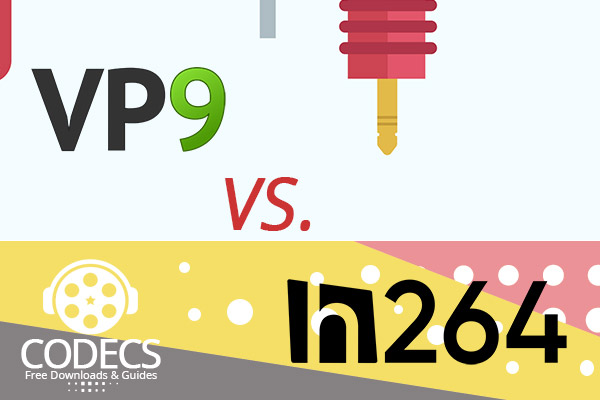Is VP9 better than H264?
Among the many codecs available, two popular options are VP9 Codec and H.264 (also known as AVC).
We will compare VP9 and AVC/H.264 to shed light on their respective strengths and weaknesses, helping you understand which codec might be better suited for your needs.
Quality:
Both VP9 and H.264 provide impressive video quality, but there are some differences to consider:
VP9: Developed by Google, VP9 offers excellent video quality and is particularly efficient in handling high-resolution content. It utilizes advanced compression techniques, such as spatial and temporal prediction, to deliver sharp and vibrant visuals. VP9 excels in preserving detail and reducing artifacts, especially at lower bitrates.
H.264: As one of the most widely adopted video codecs, H.264 has proven its capabilities over the years. It offers solid video quality and is well-suited for a range of applications. While H.264 may not match VP9's efficiency at very low bitrates, it still delivers satisfying results with good compression and reasonable visual fidelity.
Efficiency:
Efficiency is a crucial factor when it comes to video codecs, as it directly impacts file sizes, streaming capabilities, and overall performance:
VP9: It shines in terms of efficiency, providing superior compression and reducing file sizes compared to H.264. It leverages techniques like variable block size and advanced entropy coding to achieve higher compression ratios. This efficiency is especially noticeable when encoding high-resolution videos, resulting in reduced bandwidth requirements for streaming and storage.
H.264: While H.264 is not as efficient as VP9, it still offers a good balance between quality and file size. It has a mature encoding process and is widely supported across devices and platforms. H.264 remains a reliable choice for various applications, particularly when compatibility is a priority.
Compatibility is another crucial consideration when choosing a video codec:
VP9: While VP9 has gained popularity, its adoption is not as widespread as H.264. While modern web browsers and streaming platforms increasingly support VP9, older devices and applications may lack VP9 decoding capabilities. This can limit its usage in certain contexts.
H.264: It enjoys broad support across a wide range of devices, platforms, and software. It is compatible with most modern web browsers, operating systems, and video playback software. Its widespread adoption makes it a safe bet for ensuring compatibility across different devices and environments.
VP9 excels in terms of efficiency and compression, making it a top choice for high-resolution content and reducing bandwidth requirements. However, its adoption is not as widespread as H.264, which boasts broad compatibility and mature encoding processes.







